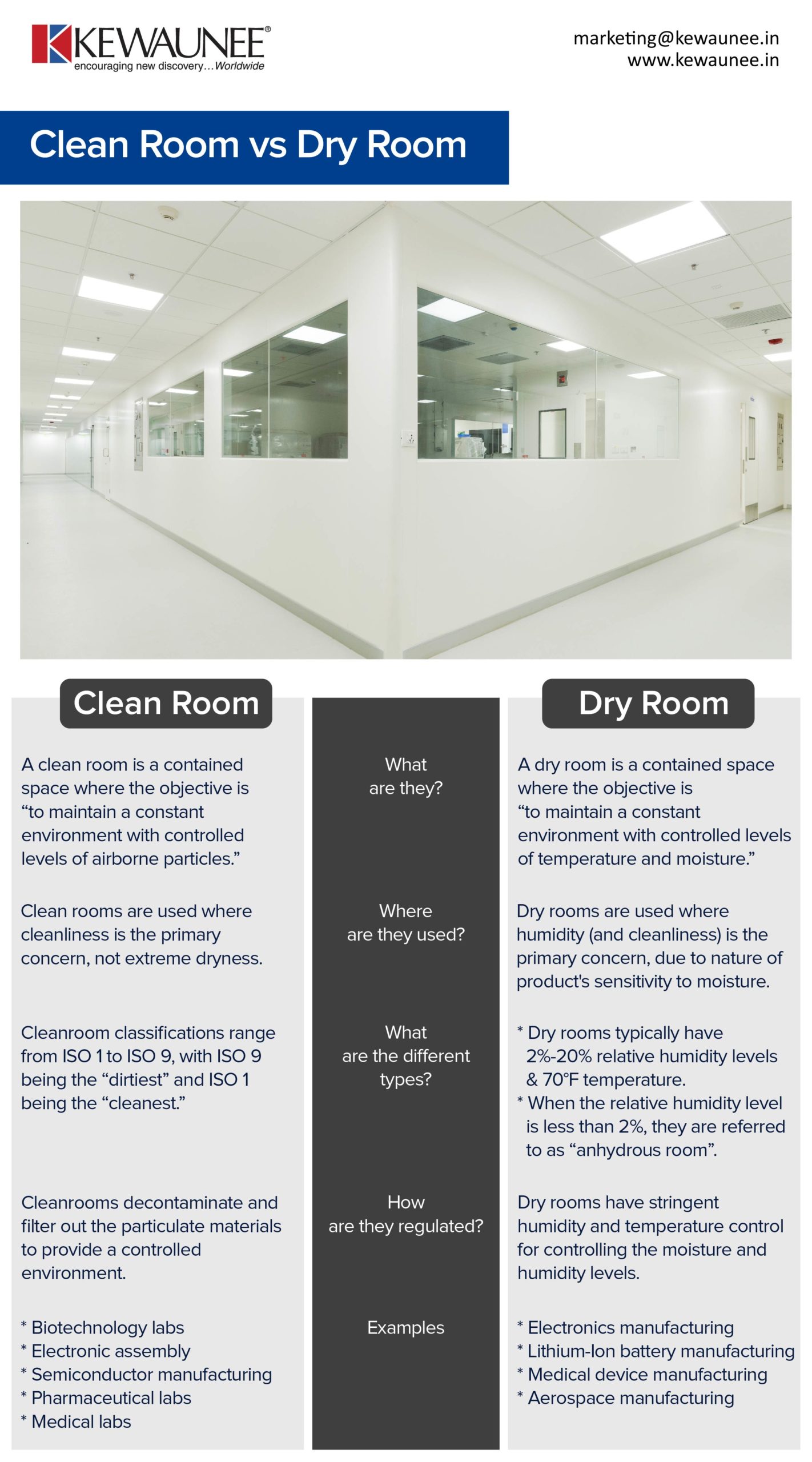Clean Room Vs Dry Room
A clean room is an environment typically used in different laboratories, where low level of environmental pollutants and a high level of sterility is required. It is a ‘contained space’ where arrangements are made to reduce the introduction, production, and storage of particles inside the room and to control other environmental factors such as temperature, humidity, and pressure.
A dry room, also known as dry clean room, on the other hand is a clean room but with low humidity levels.
Both clean room and dry room are controlled environments, but the degree of control and the requirements vary. In this blog post, we will explore the commonalities and the differences between these controlled environments:
| CLEAN ROOM | DRY ROOM | |
|---|---|---|
| What are they? | A clean room is a contained space where the objective is “to maintain a constant environment with controlled levels of airborne particles.” | A dry room is a contained space where the objective is “to maintain a constant environment with controlled levels of temperature and moisture.” |
| Where are they used? | Clean rooms are used where cleanliness is the primary concern, not extreme dryness. | Dry rooms are used where humidity (and cleanliness) is the primary concern, due to nature of product’s sensitivity to moisture. |
| What are the different types? | Cleanroom classifications range from ISO 1 to ISO 9, with ISO 9 being the “dirtiest” and ISO 1 being the “cleanest.” | Dry rooms typically have 2%- 20% relative humidity levels & 70°F temperature.
When the relative humidity level is less than 2%, they are referred to as “anhydrous room”. |
| How are they regulated? | Cleanrooms decontaminate and filter out the particulate materials to provide a controlled environment. | Dry rooms have stringent humidity and temperature control for controlling the moisture and humidity levels. |
| Examples |
|
|
Comments are closed.











